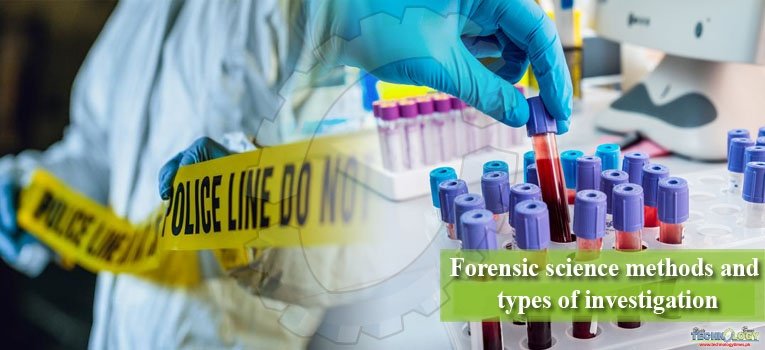In the modern world, science has made excellent developments that are needed to be acknowledged at each level of new developments. With every passing day, forensic science is undoubtedly doing wonders in inventions, more precisely in solving crimes.

A commoner can hardly believe in up-growing forensic technologies that can entirely change one’s perception towards forensic sciences. So, here are some interesting methods which a forensic expert or examiner use during a crime investigation.
Laser-Ablation-Inductively-Coupled-Plasma-Mass-Spectrometry, that deals with the investigation if broken glass is involved during a crime scene the scientists can simply use it to break down into smaller pieces with the help of a machine and find out its actual size and specifications. To use this type of equipment Graduation in Forensic Science is necessary.
Alternative-Light-Photography technique enables Omni chrome camera (which has an orange filter and blue light to detect damages below the skin) to detect the intensity of bruises way before it is clearly appeared on skin.
For a forensic investigator, doctor, or even nurse it highly important to detect the intensity of physical damage before to start working on its cure, so in this aspect, accurate and quick results are highly recommended.
For this purpose, Light Photography can work to see bruises even before they start appearing on the skin. MSN in Forensic-nursing is needed for using such type of cameras.
High-Speed-Ballistics Photography These high-speed cameras are very useful in detecting how glass shatters, gunshot wound, and bullet holes were created. It is useful for ballistics specialists in their crime scene investigation.
Anyone with a Bachelor’s Degree in Forensic science can operate this camera and investigate wounds, marks, and trajectories caused by bullets.
3D Forensic-Facial-reconstruction is the most interesting technique in forensic investigation, but we cannot call it as most reliable for Forensic pathologists, scientists, and anthropologists. In this technique, software for 3D facial construction (reconstruction) takes human remains and tries to give the most possibly accurate image.
To use such type of technology one needs to have a graduation degree in Forensics or master’s degree in Forensic Anthropology.
DNA-Sequencer requires DNA profiling for the identification process. It can surprisingly determine a unique DNA pattern only by analyzing old bones or teeth of a person that eventually leads to a possible suspect or criminal.
Automatic Identification through Magnetic Fingerprinting technique allows attaining perfect finger impressions at a crime scene without even contamination at all. It has to consider before applying this technique to opt for a Bachelor’s Degree in Forensic Science for legal authentication. Certainly, forensics is quite an incredible field to work on.
Forensics primarily deals with appropriate tools and scientific methods to solve a criminal case followed by an investigation. It is true that science is not just simply based on general observation factor but it happens to create multiple horizons of discovery and questions to ponder on.
With reference to forensic sciences, there are three different types of investigations for criminal investigation. Firstly, descriptive investigation, that depends upon a general description of any evidence or criminal. An eye-witness can play an important part in the descriptive investigation.
It has made a dynamic change in research laboratories for scientists. Comparative and Experimental investigation are the other two types. DNA identification technique is used for the experimental purpose to find.
As a whole, forensics is making a huge impact on discovering new techniques to get hands-on criminals in every possible way. Certainly, these aforementioned techniques ensure their reliability through experimentation and their ready availability as well.